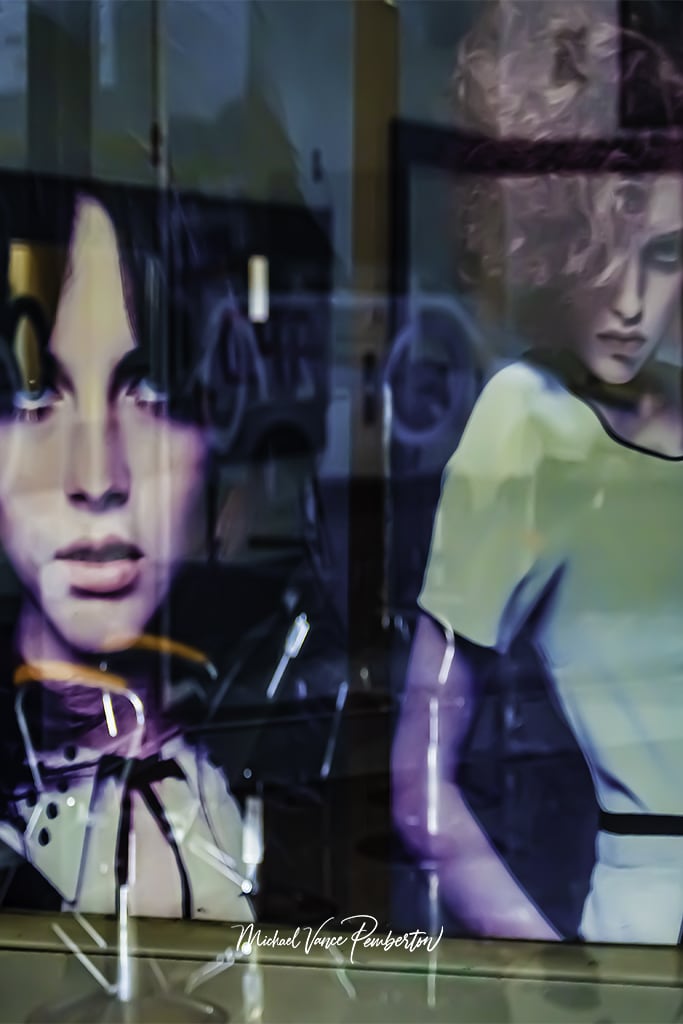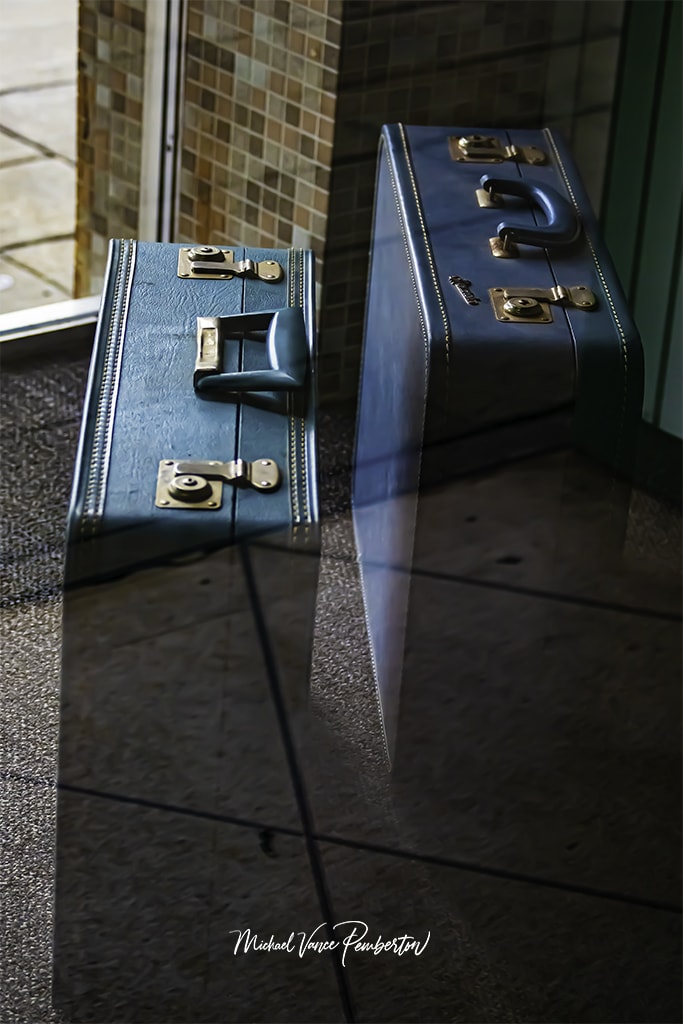
Photographing reflections is an art that involves capturing the interplay between light, surfaces, and their mirrored counterparts, resulting in visually captivating and thought-provoking images. To master the art of photographing reflections, one must consider a combination of technical skills and creative insights. Here’s a comprehensive guide on how to create stunning reflection photographs:
Choose the Right Location:
When choosing a location for capturing reflections, it’s essential to be mindful of the various reflective surfaces that can elevate your photography. Opting for environments rich in reflective elements opens up creative possibilities. Consider the following points to delve deeper into the art of selecting the perfect location:
Water Bodies:
Natural water bodies, whether tranquil lakes, meandering rivers, or vast oceans, offer a canvas of undisturbed reflection. The mirror-like quality of the water’s surface transforms any scene into a symphony of doubled beauty. The serenity of a mountain range or the vibrant colors of a sunset can be captured in perfect harmony with their mirrored counterpart on the water’s surface, creating a surreal and awe-inspiring visual.
Glass Windows:
Urban landscapes come alive when seen through the lens of a glass window. Skyscrapers, city lights, and bustling streets acquire an intriguing duality as they merge with their reflections. The transparent yet reflective nature of glass blurs the line between indoors and outdoors, inviting viewers to ponder the interplay between the constructed world and its mirrored reality.
Puddles:
Even the tiniest raindrop can become a canvas for reflection photography. Puddles, especially after a drizzle, transform ordinary sidewalks into enchanting canvases. These tiny pools of water capture fragments of the surrounding scene, offering a microcosmic perspective that encourages viewers to appreciate the beauty in the mundane.
Polished Floors:
Within architectural spaces, polished floors serve as excellent reflective surfaces. Marble, granite, or other shiny materials mirror the elegance of interiors and architectural elements. These surfaces can be harnessed to create images that explore the interplay between the man-made and the environment, capturing both the design and the organic in one compelling frame.
Natural Settings vs. Urban Environments:
The choice between natural and urban locations influences the narrative of your reflection photography. Natural settings like lakes and oceans allow you to capture the harmony between nature’s elements and their mirror images. The soft ripples on a tranquil lake or the rhythmic waves of a sea can infuse your images with a serene and timeless quality.
On the other hand, urban environments present an opportunity to juxtapose modern architecture with its own reflections. Skyscrapers and bridges, with their sleek lines and intricate designs, gain a new dimension when mirrored in glass windows or rain-soaked streets. This contrast between the innovative and the reflected can give rise to thought-provoking images highlighting the evolving relationship between human creation and its mirrored essence.
Ultimately, the choice of location lays the foundation for your reflection photography journey. Whether you’re drawn to the tranquility of natural water bodies or the vibrant energy of urban spaces, each location brings unique character to your images. By thoughtfully selecting reflective surfaces, you embark on a creative exploration that enables you to capture the world with a fresh perspective and unveil the mesmerizing dance of light and form that reflections offer.
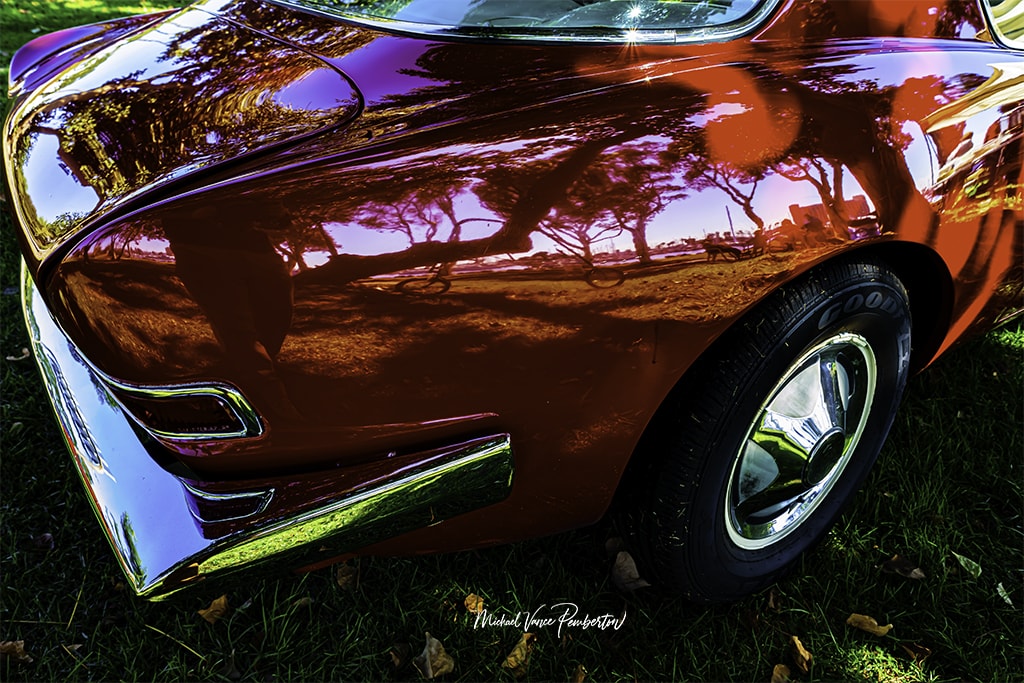
Time of Day:
Understanding and harnessing the power of light is a fundamental aspect of achieving captivating reflection photography. The interplay between light and reflective surfaces can transform an ordinary scene into a masterpiece, evoking emotions and narratives. Let’s delve deeper into how the quality of light shapes reflection photography:
Golden Hours’ Magic:
The enchanting hours of sunrise and sunset, often called the “golden hours,” hold a magical quality that painters, photographers, and artists have cherished for centuries. During these fleeting moments, the sun’s angle is lower in the sky, casting a warm and soft light across the landscape. This gentle illumination caresses the reflective surfaces, creating a symphony of rich tones, deep shadows, and vibrant highlights. As the light grazes the surface of water bodies, glass windows, or other reflective elements, it imparts a luminous quality to the reflections, enhancing their depth and allure. The warm hues of the golden hours add an emotional dimension to the images, evoking a sense of tranquility, nostalgia, and wonder.
The Pitfalls of Midday Sunlight:
While midday might seem like an opportune time for photography due to ample natural light, it can be challenging regarding reflection photography. The overhead sun casts harsh and direct sunlight, often leading to glaring reflections and washed-out details. The reflections may appear blown out, losing the subtlety and complexity that make them intriguing. The strong contrast between bright areas and deep shadows can also diminish the overall impact of the image. To overcome these challenges, seeking shaded areas or waiting for clouds to provide a natural diffuser during midday shoots is advisable.
Managing Glare and Details:
Glare is a common concern in reflection photography, mainly when the sun’s angle is low or during midday. Glare occurs when the intense light reflects directly into the camera lens, resulting in unwanted bright spots that obscure the details within the reflection. To counteract this, you can employ a polarizing filter, which helps minimize reflections and glare, allowing you to capture the scene with enhanced clarity. Additionally, shooting from different angles and adjusting the composition can help reduce or eliminate glare and improve the reflection’s details.
The quality of light plays a pivotal role in the success of reflection photography. The soft and warm illumination during the golden hours elevates the beauty of reflections, infusing them with a touch of magic and emotion. On the other hand, midday sunlight presents challenges such as glare and washed-out details, which can be mitigated by finding shaded areas or utilizing polarizing filters. By mastering the art of working with different lighting conditions, you can effectively capture the essence of reflective surfaces and create images that resonate with viewers on a profound visual and emotional level.
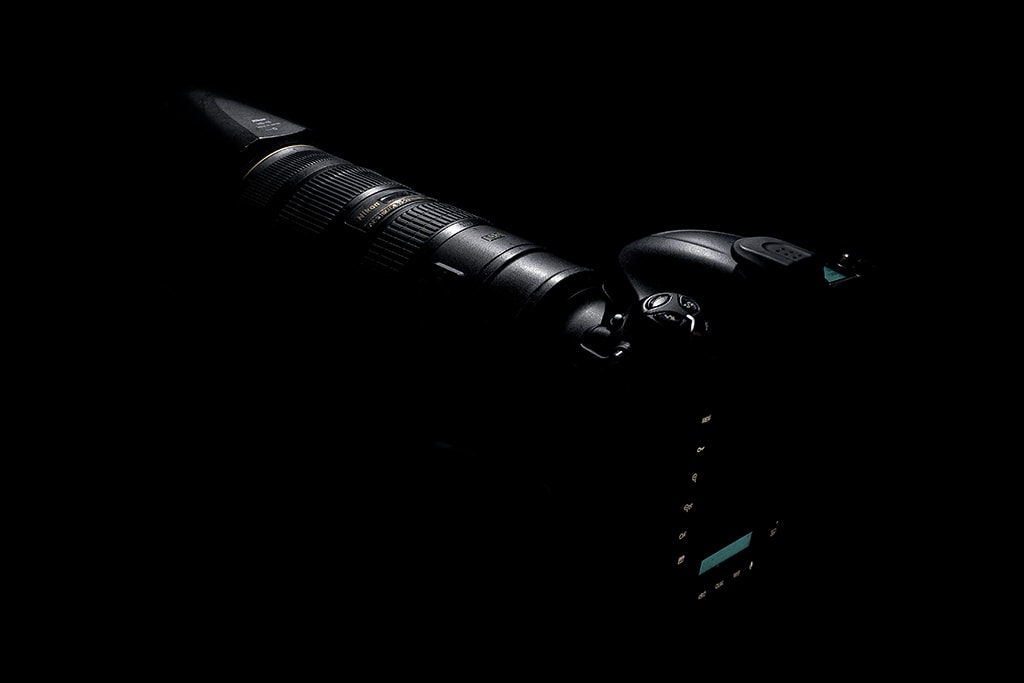
Camera and Lens:
Selecting the right camera and lens combination is crucial in mastering reflection photography, as it empowers you with the creative control needed to bring your artistic vision to life. The interplay between your equipment choices and your surroundings can significantly influence the mood and impact of your reflection images. Here’s a deeper exploration of how your camera and lens choices can enhance your reflective photography endeavors:
Camera Choice and Manual Controls:
Embracing a DSLR or a mirrorless camera equipped with manual controls is akin to wielding a painter’s brush, allowing you to craft images with precision and intention. These advanced cameras will enable you to independently adjust settings like aperture, shutter speed, and ISO. Manual control over these elements is essential for manipulating exposure, depth of field, and motion in reflection photography. This level of control empowers you to adapt to varying lighting conditions, creating images that accurately capture the nuanced interplay between reflections and their surroundings.
Lens Selection for Creative Expression:
Your lens choice is akin to selecting the palette of colors for your canvas. A wide-angle lens opens up vistas of creative possibilities by enabling you to capture expansive reflections within their natural context. When photographing large bodies of water, glass facades, or sprawling landscapes, a wide-angle lens allows you to encompass both the reflective surface and its surroundings, producing images that evoke a sense of immersion.
On the other hand, a telephoto lens becomes a powerful tool for isolating intriguing details within reflections. This type of lens lets you focus on specific elements that are mirrored, drawing attention to intricacies that might otherwise go unnoticed. With a telephoto lens, you can capture the essence of reflections more intimately, emphasizing the texture, patterns, and emotions that emerge from the mirrored scene.
The Creative Balance:
It’s essential to strike a creative balance between camera and lens choices. While wide-angle lenses can capture expansive scenes, they might occasionally lose the finer details. Conversely, telephoto lenses excel at magnifying details but might limit your ability to capture the entirety of a reflective surface. As a reflection photographer, you must consider your intent and the story you want to convey. Sometimes, the choice between a wide-angle and a telephoto lens could be influenced by the environment, the mood you wish to evoke, and the unique qualities of the reflection you’re capturing.
Selecting a camera with manual controls and strategically pairing it with the appropriate lens sets the stage for creative experimentation and innovation in reflection photography. These tools allow you to finely tune your approach, ensuring that your images encapsulate the full spectrum of emotions, details, and artistic flair that reflections offer. As you refine your technical skills and cultivate your creative intuition, your camera and lens choices will become extensions of your vision, helping you create images that resonate with viewers on a profound level.
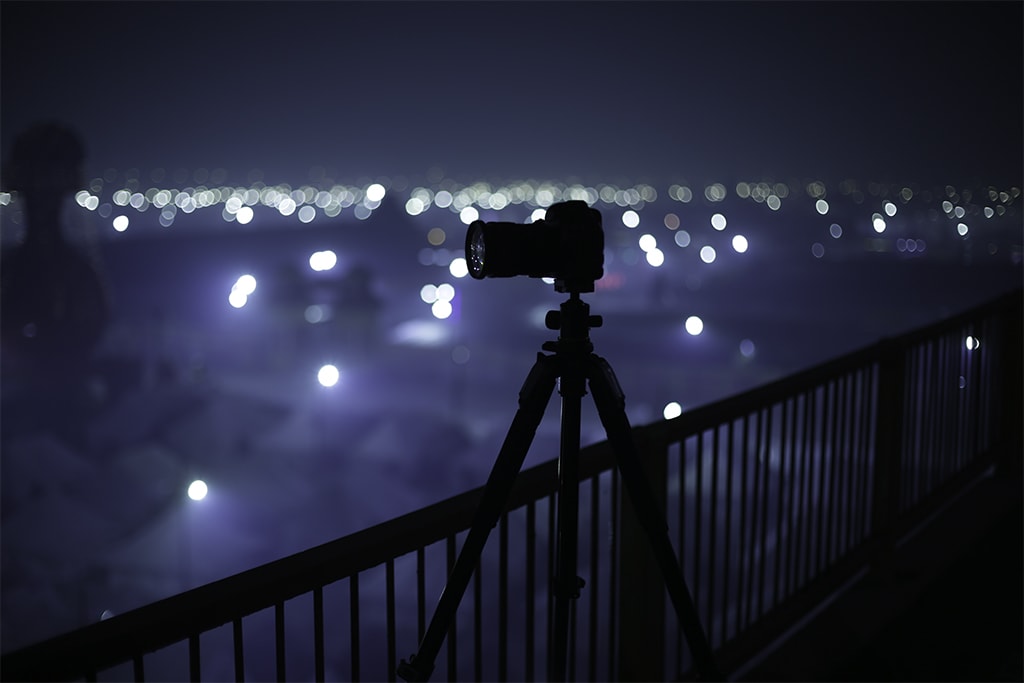
Stable Setup:
Employing a tripod in reflection photography is akin to laying a solid foundation for creating exquisite visual masterpieces. The role of a tripod extends far beyond mere stability; it becomes a conduit that bridges the gap between your creative intent and technical execution. Let’s delve into the significance of using a tripod and how it elevates your reflection photography, particularly in scenarios that involve longer exposure shots and low-light conditions:
Stability for Precision:
The essence of reflection photography lies in capturing intricate details, subtle textures, and the interplay of light with reflective surfaces. A tripod is an unwavering ally, ensuring your camera remains steady throughout the exposure. In contrast to handheld shooting, which can introduce unintended vibrations and camera shake, a tripod provides rock-solid stability. This stability is paramount when capturing reflections, as even the tiniest movement can compromise the sharpness and clarity of the final image.
Longer Exposure Mastery:
Reflection photography often demands more prolonged exposure, especially when working in low-light environments or aiming to achieve specific creative effects. Longer exposures allow you to capture the mesmerizing transformation of moving water into a silky-smooth surface or the gentle blurring of city lights mirrored on water bodies. With a tripod, you can extend your exposure times without worrying about camera shake, thus unlocking creative opportunities that require time to unfold.
Low-Light Brilliance:
The tripod becomes an indispensable tool for maintaining image quality as the ambient light dwindles during dawn, dusk, or nighttime. In low-light conditions, using a tripod ensures that your camera can capture scenes without relying on high ISO settings, which can introduce noise and affect image clarity. By anchoring your camera to a tripod, you allow it to absorb the available light patiently, resulting in images that retain their richness of color, detail, and tonality.
Composition and Precision:
The use of a tripod grants you the luxury of meticulous composition. It encourages you to slow down, carefully frame your shot, and fine-tune your settings. This deliberate approach fosters a deeper connection with your subject and surroundings, allowing you to craft images that mirror your artistic intent. Furthermore, a tripod lets you explore alternative angles and perspectives, aiding in creating compositions that might be challenging to achieve while handholding the camera.
In reflection photography, where every detail counts and the nuances of light play a pivotal role, the tripod emerges as an indispensable tool. Its stability ensures the integrity of your images, enabling you to execute longer exposure shots that reveal hidden facets of the reflective world. As you embrace the tripod as an integral part of your photographic process, you elevate your ability to capture the exquisite beauty, intricate patterns, and mesmerizing play of light that reflection photography so eloquently embodies.
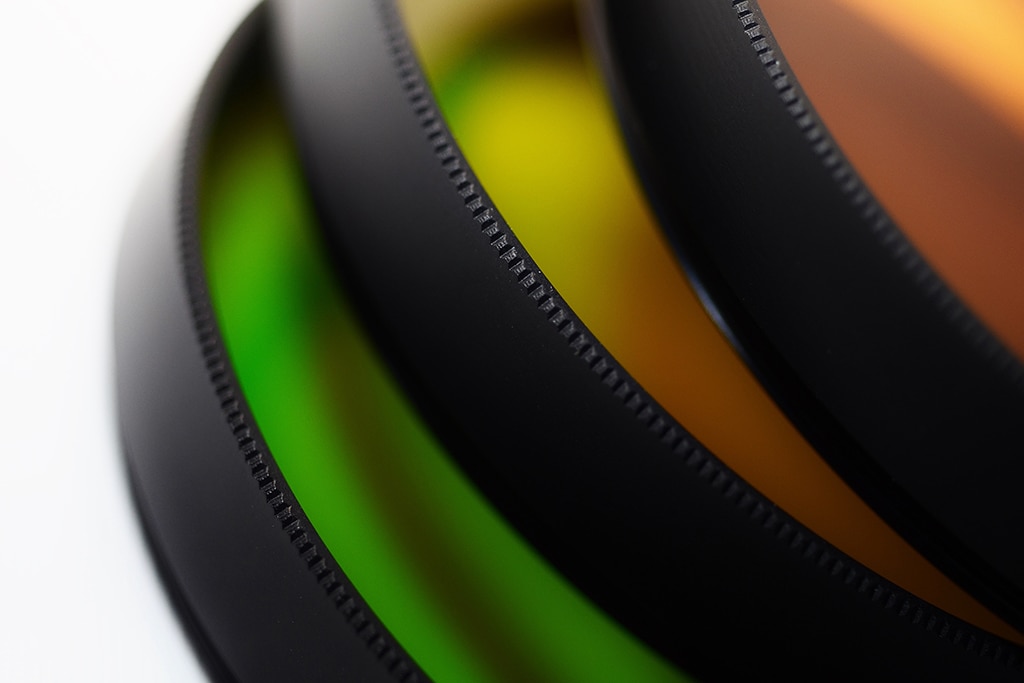
Polarizing Filter:
Attaching a polarizing filter to your lens is akin to placing a magician’s lens cap upon your camera—an optical marvel that wields transformative powers over your reflection photography. This unassuming accessory, though modest in appearance, profoundly impacts the final outcome of your images, shaping the interplay of light, color, and glare in ways that enhance visual allure and storytelling. Let’s delve into the multifaceted benefits of the polarizing filter in the realm of reflection photography:
Reflections Beguiled:
A polarizing filter is particularly adept at taming reflections from non-metallic surfaces. When light waves bounce off these surfaces, they become polarized, leading to glare and unwanted reflections that can hinder the clarity of your images. With the introduction of a polarizing filter, this accessory acts as a guardian, selectively blocking certain polarized light waves. As a result, the reflections on water, glass, or other polished materials are subdued, allowing you to capture the scene with greater clarity, detail, and depth.
Color Saturation Amplified:
Beyond its prowess in reflection control, the polarizing filter brings an enchanting gift to your palette—enhanced color saturation. By reducing scattered light, the filter makes colors appear more vibrant, rich, and true to life. The blues of a sky reflected on a calm lake become deeper and more captivating. At the same time, foliage and landscapes acquire a lushness that captures the scene’s essence with remarkable fidelity.
Glare’s Nemesis:
Glare, a persistent adversary in reflection photography, is subdued by the polarizing filter’s vigilant gaze. This accessory eliminates or mitigates bright spots caused by direct light reflecting into the lens. This control over glare ensures that the intricate details within reflections remain visible and sharp, contributing to the overall image’s impact and clarity.
Creative Veil:
The polarizing filter also assumes the role of a creative veil, allowing you to play with the dynamic relationship between polarized and unpolarized light. By rotating the filter, you can modulate the degree of polarization, affecting the intensity of reflections and the clarity of non-reflective elements in your composition. This control offers you a canvas of creative possibilities—subtle adjustments that can redefine the mood and narrative of your reflection images.
Incorporating a polarizing filter into your photographic arsenal opens a portal to a realm where reflections bow to your command and colors radiate with newfound brilliance. It bestows upon you the ability to sculpt your images with meticulous precision, unraveling the layers of glare and harnessing the full spectrum of color nuances. As you attach this unassuming yet transformative filter to your lens, you embark on a journey where the play of light and form bends to your creative will, resulting in images that encapsulate the breathtaking beauty and depth of the world’s mirrored vistas.
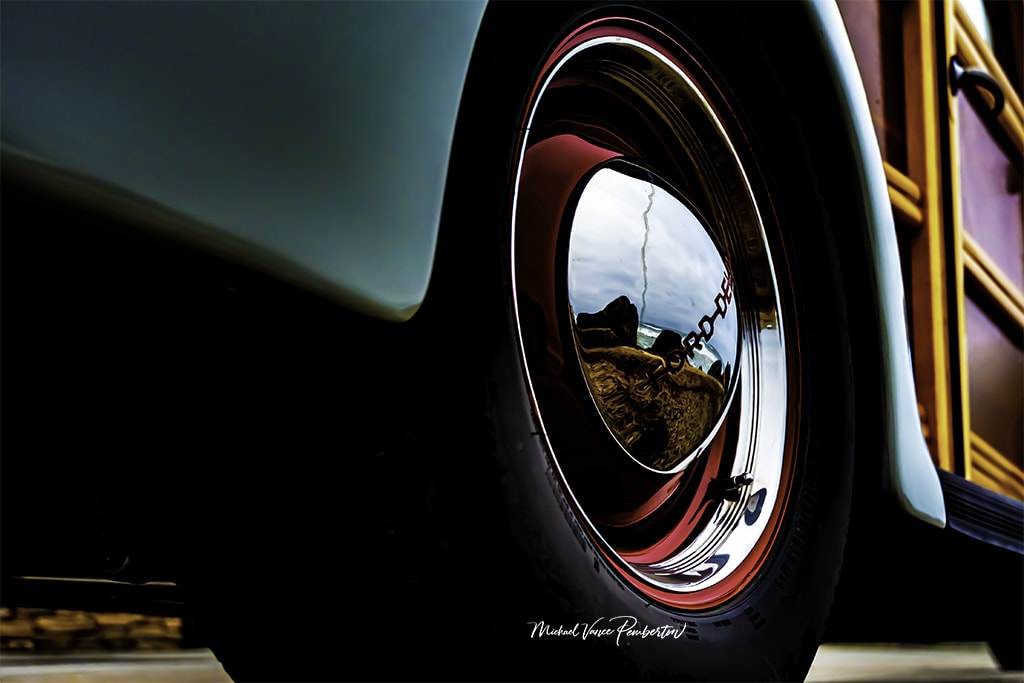
Composition:
Composing a reflection photograph is akin to orchestrating a visual symphony, where every element harmoniously tells a compelling story. The canvas of reflective surfaces offers a unique arena for the interplay of light, form, and symmetry. Paying heed to composition principles—such as the rule of thirds, leading lines, and symmetry—unlocks a world of creative possibilities that allow you to craft images that resonate deeply with viewers. Here’s an exploration of how these principles intertwine with reflection photography and how experimentation with the placement of reflections can yield diverse effects:
Rule of Thirds:
The rule of thirds is a timeless composition principle that divides the frame into a grid of nine equal segments formed by two horizontal and two vertical lines. Placing key elements—like the horizon or focal points—along these lines or at their intersections creates balance, visual intrigue, and dynamic tension. In reflection photography, this principle encourages you to position the reflective surface and its mirrored counterpart along these lines, enabling a sense of equilibrium while adding depth and energy to the composition.
Leading Lines:
Leading lines are visual pathways that guide the viewer’s eye through the image. They draw attention to specific areas, create depth, and imbue the composition with a sense of movement or direction. Reflections uniquely amplify leading lines—whether they’re natural elements like rivers or streets or architectural features like bridges. By aligning these lines with the reflection, you guide the viewer’s gaze along a mesmerizing journey that connects the real and the mirrored worlds.
Symmetry’s Allure:
Symmetry, a potent composition tool, plays exceptionally well with reflections. Perfect symmetry occurs when elements on one side of the frame mirror those on the other. Utilizing the reflective surface as a central axis, you can create images that exude a sense of balance, calmness, and aesthetic precision. Symmetrical reflection compositions often evoke a serene and contemplative atmosphere, inviting viewers to explore the duality within the frame.
Central or Off-Center Reflections:
The choice between placing the reflection at the center or off-center depends on the mood you wish to convey. Placing the reflection at the center can create a sense of focus, balance, and poise. This approach emphasizes symmetry and draws attention to the mirrored interplay. On the other hand, placing the reflection off-center introduces an element of dynamism and tension, allowing you to explore the relationship between the reflected and non-mirrored elements. Off-center reflections can evoke curiosity and invite viewers to engage more actively with the image.
You incorporate an intricate tapestry of visual storytelling by weaving these composition principles into your reflection photography. The reflection’s interaction with its surroundings becomes a narrative thread, and the interplay of lines and symmetries serve as chapters that guide the viewer’s journey. Through experimentation with placement—whether central, off-center or along leading lines—you wield the power to evoke diverse emotions and perspectives, resulting in images that resonate as richly as the reflective surfaces they capture.

Depth of Field:
Manipulating the aperture is akin to wielding a magician’s wand that shapes the very essence of your reflection photography. This delicate dance between the size of the aperture and the resulting depth of field offers you a realm of creative control over how your images tell their stories. By deftly adjusting the aperture, you wield the power to evoke emotions, emphasize details, and infuse your reflective compositions with depth and resonance. Here’s an exploration of how aperture choices influence your reflection photography, revealing the intriguing interplay between foreground and background:
Wide Aperture’s Enigma:
A wide aperture, characterized by a small f-number (such as f/1.8 or f/2.8), casts a magical spell on your images. When employed in reflection photography, this enchanting aperture choice transforms the background into an ethereal tapestry of color and light. The shallow depth of field achieved with a wide aperture artfully blurs the non-reflective elements in the scene, making them melt into dreamy bokeh. This blurring focuses squarely on the reflection, elevating it to the protagonist’s status within the frame. The background becomes a painterly backdrop, offering hints of context without overshadowing the mirrored beauty that takes center stage.
Narrow Aperture’s Panorama:
On the other side of the aperture spectrum lies the narrow aperture, characterized by a large f-number (such as f/16 or f/22). This choice unravels a different kind of magic that aims to capture the full depth and breadth of the scene. By using a narrow aperture, you expand the depth of field, ensuring that both the reflection and the non-reflective elements remain in sharp focus. The scene emerges as a panorama of intertwined details, allowing viewers to explore the subtle nuances within both worlds—the mirrored and the actual. This approach is efficient when you wish to convey a sense of place, emphasizing the relationship between the surroundings and their reflected counterparts.
Crafting Visual Dialogue:
The interplay between wide and narrow apertures becomes a conversation between foreground and background, reflection and reality. Your choice of aperture influences the narrative you wish to convey. The wide aperture imbues the image with mystery and intimacy, inviting viewers to peer into the heart of the reflection. On the other hand, the narrow aperture constructs a comprehensive visual tale, where both mirrored and non-mirrored elements weave together into a cohesive narrative.
In the realm of reflection photography, your mastery of the aperture opens up avenues of creative expression. It enables you to sculpt the relationship between the reflection and its surroundings, guiding the viewer’s gaze and emotions. As you delicately navigate the aperture settings, you shape the visual conversation within the frame. These fashioning images testify to your artistry, intent, and ability to transform ordinary scenes into extraordinary tales.
Exposure Settings:
Navigating the intricacies of exposure settings in reflection photography is akin to playing a symphony where light, time, and sensitivity harmonize to create breathtaking visuals. Depending on the available light conditions, your choice between manual or semi-manual modes shapes the narrative of your images. You craft a canvas where exposure dances with creativity by deftly experimenting with shutter speed, aperture, and ISO. The resulting images, whether serene waterscapes or vibrant cityscapes, witness your mastery over light’s nuances and its impact on reflective surfaces.
Manual and Semi-Manual Modes:
The decision to employ manual or semi-manual modes hinges on your familiarity with your camera’s settings and your intent as a photographer. Manual mode affords complete control over exposure settings, allowing you to meticulously fine-tune shutter speed, aperture, and ISO to your desired specifications.
This level of control is invaluable when working with complex lighting situations or aiming to achieve specific creative effects. On the other hand, semi-manual modes, such as aperture priority (Av/A) or shutter priority (Tv/S), balance creative control and automation. They allow you to prioritize a particular setting (like aperture or shutter speed) while the camera adjusts the other parameters accordingly.
Experimenting with Shutter Speed, Aperture, and ISO:
Shutter speed, aperture, and ISO—these three exposure parameters form the triumvirate of creative choices at your disposal. Shutter speed controls the duration of light exposure, influencing motion and the depiction of movement in reflections. A slower shutter speed can render moving water a smooth, ethereal surface, while a faster speed can freeze ripples and capture dynamic textures. As previously discussed, the aperture governs the depth of field—a wide aperture blurs the background, emphasizing the reflection, while a narrow aperture retains sharpness throughout the scene. ISO determines the camera’s sensitivity to light, affecting image noise and graininess. Higher ISO values may be necessary in low-light conditions, but striking a balance is critical to maintaining image quality.
Longer Exposures’ Allure:
Longer exposures weave a tapestry of enchantment over reflection photography. You craft images that resonate with ethereal beauty by allowing light to paint its nuances over an extended period. For instance, longer exposures lend waterscapes a velvety smoothness, transforming lakes, rivers, and oceans into mirror-like surfaces that evoke a sense of calm. In urban environments, longer exposures can capture the dazzling dance of city lights, blending reality and its reflection into a vibrant and captivating scene. Balancing the length of exposure with other settings creates images that capture time’s passage with captivating elegance.
In reflection photography, your command over exposure settings transforms you into a conductor of light and time. You paint images that mirror your artistic intent through shutter speed, aperture, and ISO, harnessing the essence of the moment and the soul of reflective surfaces. As you navigate the intricacies of these settings, you unravel a world where light becomes your brushstroke, and reflections take on a life of their own, culminating in images that inspire, engage, and evoke a profound visual resonance.
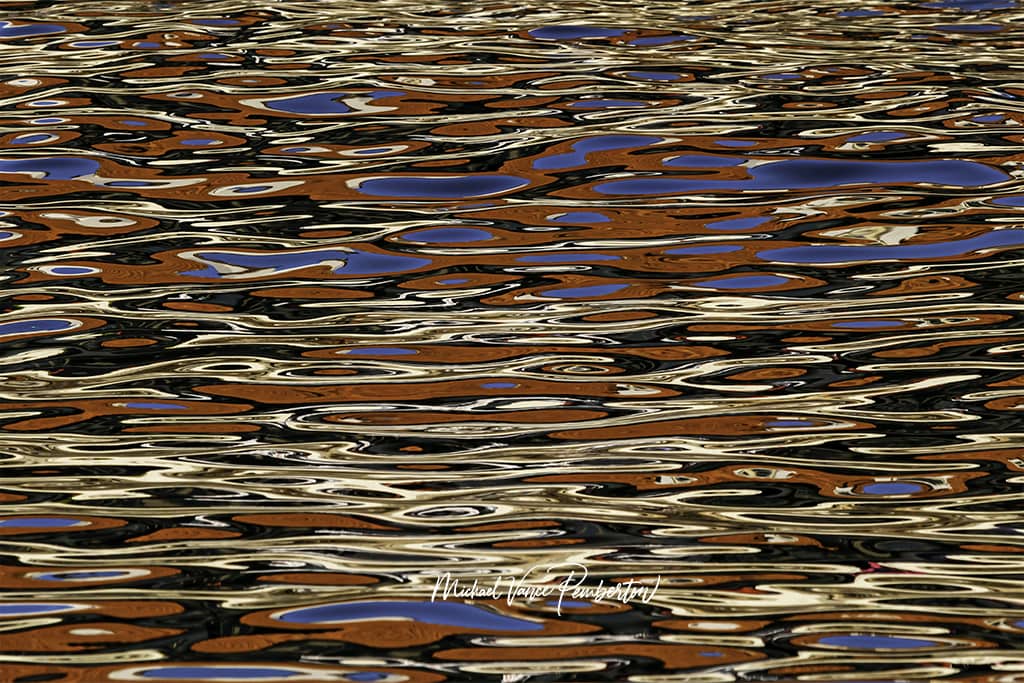
Framing and Framing:
Incorporating frames within reflection photography is akin to sculpting a multidimensional narrative within a single image—a narrative where the world’s mirrored essence is delicately embraced by its surroundings. This creative technique elevates your images by introducing depth, context, and visual intrigue layers. By thoughtfully positioning elements like arches, doorways, or natural structures around the reflection, you invite viewers to embark on a journey that transcends the photograph’s surface. Let’s delve into the art of using frames within frames and how they enrich your reflection compositions:
Aesthetic Embrace:
Frames within frames possess a captivating allure that draws the viewer’s gaze into the heart of the image. You encircle the reflection in an aesthetic embrace by using architectural elements like arches or doorways or natural forms like tree branches or rock formations. This technique adds a layer of visual interest and establishes a sense of intimacy—almost as if the reflection is a cherished secret, revealed only to those who peer through the frame.
Depth and Dimension:
Frames within frames can imbue an image with depth and three-dimensionality. As the foreground element creates a physical boundary, the background reflection gains a palpable distance. This interplay between layers instills a tangible dimension to the photograph, evoking a feeling of immersion and inviting viewers to explore the image’s layers with curiosity.
Contextual Enrichment:
The addition of frames within frames extends beyond mere aesthetics; it also contributes to the contextual richness of the composition. The surrounding elements offer a glimpse into the environment that gives birth to the reflection, providing viewers with a broader understanding of the scene’s setting. This contextual information can enhance the story the image tells, offering a more complete narrative that resonates visually and emotionally.
Narrative and Symbolism:
Frames within frames enable you to infuse your images with narrative and symbolism. The choice of architectural or natural elements as frames can carry inherent meanings or evoke certain emotions. A weathered doorway might hint at the passage of time, while an ornate arch could evoke a sense of grandeur. Combining the reflection with a carefully selected frame creates a dynamic interplay of symbolism that deepens the viewer’s engagement with the image.
Incorporating frames within frames requires a keen eye for composition, where you harmonize the reflection, the frame, and the overall scene into a cohesive visual story. This technique exemplifies the intricacies of reflection photography, where the subject and its context are carefully considered. As you master the art of framing, you create images that transcend the confines of the photograph, extending an invitation to viewers to venture into a world where reflections and reality merge in a symphony of visual storytelling.
Experiment with Angles:
Embracing unconventional perspectives in reflection photography is akin to stepping into a realm of infinite possibilities—an arena where the ordinary is transformed into the extraordinary, and the familiar becomes a source of newfound wonder. By breaking free from traditional viewpoints and venturing into uncharted territory, you open doors to creativity that can breathe life into your images. The art of changing your perspective through crouching, tilting your camera, or exploring unusual angles empowers you to create reflection shots that are dynamic, thought-provoking, and visually captivating:
Dynamic Depth and Engagement:
Altering your perspective injects a dynamic sense of depth into your images, making them come alive with layers and textures. Crouching low to the ground or positioning your camera at an angle that deviates from the norm introduces foreground elements that lead the viewer’s gaze into the reflection’s world. This multidimensional approach engages the viewer, inviting them to explore the composition with an immersive and inquisitive mindset.
Novelty and Unconventionality:
Shooting from unusual angles or tilting your camera defies expectations, infusing your reflection photography with an air of novelty and unconventionality. You breathe new life into familiar scenes by challenging the norms of how we perceive reflections. The resulting images transcend the ordinary, becoming visual enigmas that spark curiosity and invite viewers to question their perceptions.
Transforming Mundane into Art:
Everyday scenes can be transformed into extraordinary works of art through innovative perspectives. A puddle on a sidewalk or a windowpane can be elevated to an entirely new level of aesthetic appeal when captured from an unexpected angle. This transformation unveils the hidden beauty within the mundane, encouraging viewers to appreciate the intricacies of the world around them.
Narrative and Emotion:
Changing your perspective can imbue your images with narrative and emotion. The viewpoint you choose can evoke different moods and tell unique stories. A reflection captured from a low angle might evoke a sense of grandeur, while a tilted camera might infuse a scene with a touch of playfulness or intrigue. The perspective becomes a storytelling tool, enabling you to convey a specific message or sentiment.
As you explore unconventional angles and perspectives in reflection photography, you venture into the territory of experimentation and artistic exploration. This journey leads you beyond the confines of standard compositions and empowers you to reinterpret the world through your lens. By embracing these creative techniques, you create images that not only mirror the external world but also reflect the depth of your artistic vision, inviting viewers to join you on a visual odyssey that celebrates the beauty of the unexpected.
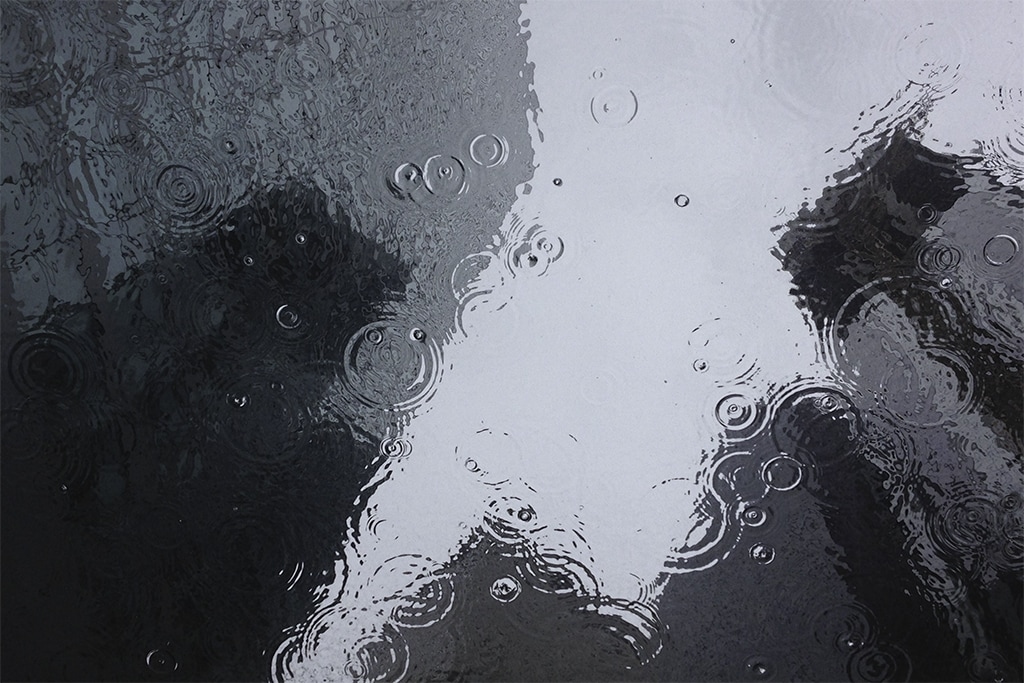
Weather Conditions:
In the world of reflection photography, the weather becomes a collaborator—a partner that wields its own artistic brush to shape the canvas of your images. Different weather conditions infuse your compositions with diverse emotions, atmospheres, and stories, offering a captivating range of reflection opportunities. The interplay between weather and reflective surfaces becomes a dance of light and mood, creating images that resonate with viewers on a profound visual and emotional level. Let’s explore how various weather conditions lend their distinct charm to reflection photography:
Rain’s Elegance:
Rain-soaked streets transform urban landscapes into mesmerizing canvases of light and color. The glistening pavements mirror city lights and architecture, creating a shimmering world that’s both dreamlike and real. Puddles form natural mirrors that capture the scene from an alternative angle, adding depth and intrigue to your composition. Raindrops on glass windows introduce a unique texture, diffusing light and softening details. These delicate nuances blend to produce images that embody elegance and refinement.
Mist’s Mystery:
Mist or fog envelops scenes in an air of mystery and enchantment. The soft diffusion of light creates an ethereal quality that shrouds reflective surfaces in a delicate veil. The familiar takes on an otherworldly charm when photographing reflections in misty conditions. Trees, buildings, and even distant objects become subtle silhouettes, revealing themselves with gradual revelation. This atmospheric effect infuses your images with tranquility and a touch of poetic ambiguity.
Snow’s Serenity:
In snowy landscapes, reflections take on a serene and pristine allure. Snow-covered surfaces act as a natural canvas, enhancing the contrast between the reflection and its surroundings. The crisp, white backdrop elevates the vibrancy of colors and shapes mirrored on the reflective surface. Winter’s purity and stillness are captured in these images, resulting in compositions that evoke a sense of calmness and wonder.
Sunset and Sunrise Magic:
During the golden hours of sunrise and sunset, weather conditions become even more transformative. The interplay of warm, soft light with rain-soaked streets, mist, or snow lends a dreamlike quality to the reflections. These moments of dynamic illumination create images that feel like visual poetry, where light dances upon the mirrored surfaces, creating a symphony of hues, textures, and emotions.
Storm’s Drama:
Stormy weather introduces a dramatic edge to reflection photography. The contrast between dark skies and illuminated reflections adds intensity and energy to the composition. Lightning strikes, rolling clouds, and dramatic skies are mirrored in water bodies or glass windows, creating images that exude a raw and evocative power.
Incorporating diverse weather conditions into your reflection photography expands your creative palette, allowing you to capture the world in its myriad moods and moments. As you navigate rain, mist, snow, and other atmospheric nuances, you weave a narrative that’s as much about the elements as it is about reflections. These images transport viewers to realms where nature’s palette collaborates with reflective surfaces, crafting images that evoke emotions, invite contemplation, and celebrate the ever-changing beauty of the world.
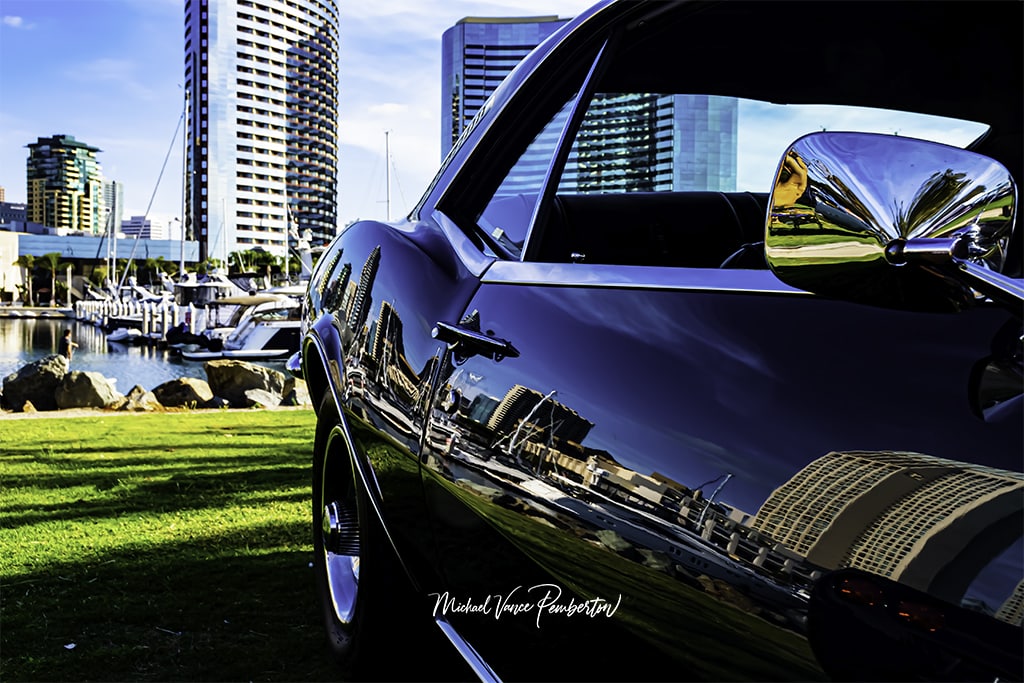
Post-Processing:
Post-processing is the grand finale in the symphony of reflection photography—a stage where you refine, enhance, and amplify the essence of your images. With the deft strokes of digital editing tools, you can transform your reflection captures into breathtaking visual masterpieces. The delicate balance lies in enhancing the reflections while preserving their authenticity and the inherent beauty of the scene. Here’s how the art of post-processing allows you to elevate your reflections:
Contrast’s Drama and Depth:
Adjusting contrast adds dimension and drama to your reflection images. By carefully enhancing the difference between light and dark areas, you reveal intricate details within the reflection and its surroundings. The play of light on water or glass is intensified, imbuing the image with an air of intensity that captivates the viewer’s gaze. This touch of contrast heightens the visual impact without sacrificing the natural look of the scene.
Saturation’s Vibrancy:
Saturation control empowers you to amplify the colors within the reflection. When used judiciously, this tool breathes life into the composition, intensifying the hues mirrored on the surface. Vibrant sunsets reflected on water or the brilliant lights of a cityscape can be heightened without crossing the threshold into artificiality. Striking the right balance ensures the reflection retains its authenticity while exuding a captivating vibrancy.
Color Balance’s Harmony:
Harmonizing color balance is a delicate dance that ensures the reflection remains true to the scene’s ambiance. Adjusting color temperature lets you fine-tune the interplay between warm and cool tones. The goal is to evoke the emotional and atmospheric essence of the moment—the cool serenity of a misty morning or the warm, inviting glow of a sunset reflected on the water. Balancing these color elements preserves the scene’s authenticity and resonates with viewers on a visceral level.
Selective Editing for Precision:
The magic of post-processing lies in its precision. Rather than applying sweeping changes to the entire image, consider selective editing. This technique enables you to target specific areas within the reflection, enhancing details and correcting imperfections without affecting the composition. This approach ensures that your edits align with your artistic vision while maintaining the nuanced integrity of the reflection.
Striking the Right Balance:
The heart of successful post-processing lies in striking the right balance between enhancement and authenticity. As you enhance contrast, saturation, and color balance, keep in mind the scene’s atmosphere, mood, and natural aesthetics. Your goal is to showcase the reflection’s inherent beauty while staying true to the emotional resonance of the moment.
In reflection photography, post-processing is the realm of the artist’s brush—an opportunity to add your signature touch to your captured images. By delicately enhancing the contrast, saturation, and color balance, you breathe life into your reflections, coaxing them to reveal their hidden depths and vibrant hues. This process elevates your captures from mere photographs to visual stories that resonate with viewers visually and emotionally.

Storytelling:
In reflection photography, every mirrored surface becomes a canvas for storytelling—a medium through which narratives can be woven, emotions can be evoked, and messages can be communicated. By harnessing the dynamic interplay between reflected and real elements, you transcend the realm of mere imagery and step into the realm of visual storytelling. Reflections serve as both protagonists and mirrors to the world, allowing you to convey messages, spark curiosity, and ignite emotions in a way that resonates deeply with viewers. Here’s how you can master the art of using reflections to tell a story and craft compelling visual narratives:
Elements in Dialogue:
The reflection becomes more than a mirrored surface—it becomes a partner in dialogue. Incorporating people, objects, or scenes that interact intriguingly with their mirrored counterparts creates a mesmerizing sense of visual narrative. A lone figure walking along a puddle-strewn alleyway, their reflection striding beside them, can evoke feelings of solitude, introspection, or parallel journeys. The juxtaposition of elements in the reflection and reality enriches the image with layers of meaning, inviting viewers to contemplate the relationships and stories that unfold within the frame.
Echoes of Emotion:
Reflections have a unique capacity to amplify emotions. By aligning emotions within the reflected and non-reflected elements, you magnify the impact of your image. A couple’s embrace reflected on a rain-slicked street resonates with an air of romance, while a solitary figure gazing at their own reflection can evoke introspection and contemplation. The reflection acts as an emotional echo, reinforcing the sentiment you wish to convey.
Visual Parallels and Contrasts:
Reflections can draw parallels or create contrasts, adding depth to your visual narrative. When elements in the reflection mirror their counterparts in reality, a sense of symmetry and harmony emerges—a reflection of unity, duality, or continuity. Conversely, contrasts between the reflected and non-reflected elements introduce tension, sparking curiosity and inviting viewers to explore the connection between the two worlds.
Metaphor and Symbolism:
Reflections lend themselves to metaphor and symbolism, allowing you to communicate complex ideas in a visual, accessible manner. A reflection’s transformation of reality can serve as a metaphor for transformation or self-discovery. Symbolic elements can be strategically positioned within the reflection, amplifying their meaning within the larger composition.
Invoking Curiosity and Contemplation:
Reflections have an innate ability to invoke curiosity and contemplation. When used intentionally, they draw viewers in, encouraging them to engage with the image beyond the surface. The presence of a reflection creates an open-ended narrative—an invitation for viewers to fill in the gaps, imagine stories, and uncover hidden meanings.
Incorporating reflections to tell a story is an art of subtlety, intention, and the ability to see beyond the surface. By thoughtfully crafting compositions that meld the reflected and non-reflected worlds, you create images that transcend visual aesthetics and delve into emotion, meaning, and human connection. As you harness the narrative potential of reflections, you transform photographs into windows to alternate realities, where viewers become participants in the stories you’ve woven within the frame.
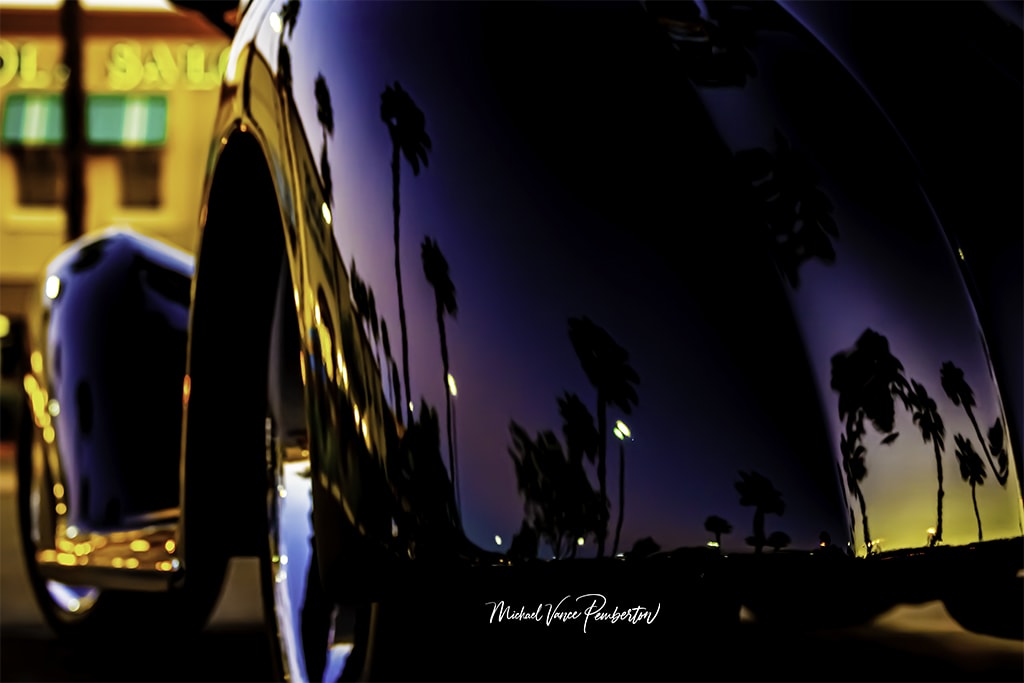
Practice Patience:
In reflection photography, patience becomes both your companion and your virtue—a steadfast ally that stands between a good shot and the perfect shot. The pursuit of capturing reflections that resonate with beauty and intrigue demands a willingness to embrace the passage of time, waiting for that ephemeral moment when the elements align harmoniously, and the lighting conditions paint the scene in their most enchanting hues. Here’s an exploration of how patience plays a pivotal role in achieving the perfect reflection shot:
A Dance of Elements:
Reflection photography is a stage where natural elements engage in an exquisite dance. Water ripples, wind gusts, and light’s ever-changing embrace orchestrate this performance. Patience becomes your backstage pass—an invitation to witness and capture these fleeting moments. Waiting for these elements to align—when water becomes still, winds calm, and light embraces the scene in its golden embrace—unlocks the door to images that encapsulate the world’s hidden poetry.
The Magic of Light:
Light, the painter of reflections, exhibits its magic throughout the day. The interplay between natural and artificial light sources creates dynamic scenarios. Patience transforms you into an observer of this celestial painter, anticipating the golden hour’s warm embrace or the twilight’s gentle caress. Waiting for these optimal lighting conditions results in reflections that radiate with captivating hues, intricate textures, and a play of shadows that bring the scene to life.
Whispers of Atmosphere:
Atmospheric conditions play a crucial role in reflection photography. Mist, fog, rain, and snow transform reflective surfaces into magical canvases. Patience allows you to await the whispers of atmosphere—to anticipate the moment when mist envelopes a scene, softening edges and imbuing reflections with an ethereal quality. Each atmospheric shift introduces a unique storytelling element, and patience grants you the privilege to capture these transformative nuances.
Alignment of Details:
Capturing a perfect reflection shot often entails aligning intricate details—an architectural arch, a subject’s gaze, or a specific angle. Patience permits you to compose meticulously, ensuring that every element within the frame complements the reflection’s narrative. Waiting for the precise alignment of these details fosters a visual cohesion that elevates your images from snapshots to visual masterpieces.
The Joy of Anticipation:
Patience in reflection photography is more than just enduring the passage of time—it’s an anticipation of the sublime. You cultivate a heightened awareness as you wait for the elements to converge. Every ripple in the water and every shift in light becomes a chapter in your visual story. The joy lies in capturing the shot and the anticipation of its creation—a symphony of moments that culminate in a single, perfect image.
In reflection photography, patience is an investment. This investment pays dividends in the form of images that resonate deeply and capture the essence of time, light, and the world’s hidden intricacies. It’s a testament to your dedication as an artist—an acknowledgment that perfection is not a hurried pursuit but a journey guided by the rhythms of nature and the nuances of your creative vision. As you patiently await the convergence of elements, you uncover the beauty beyond the surface, creating images that tell stories that transcend time and space.
Conclusion: Reflection photography is an art form that combines technical expertise with creative vision. By mastering these techniques and continuously experimenting, you can produce captivating images that showcase the world in a new light and reflect your unique perspective as a photographer.


Recent Posts
In shadows cast by love's deceitful guise,He wandered blind, his heart the captive prize.Through realms unknown, where truth remained concealed,He followed trails of falsehood, unrevealed. Blinded...
Prepare to be amazed as the MCAS Cherry Point Air Show returns on May 11-12. This annual event, hosted by the Marine Corps Air Station (MCAS) Cherry Point in North Carolina, promises a weekend of...
